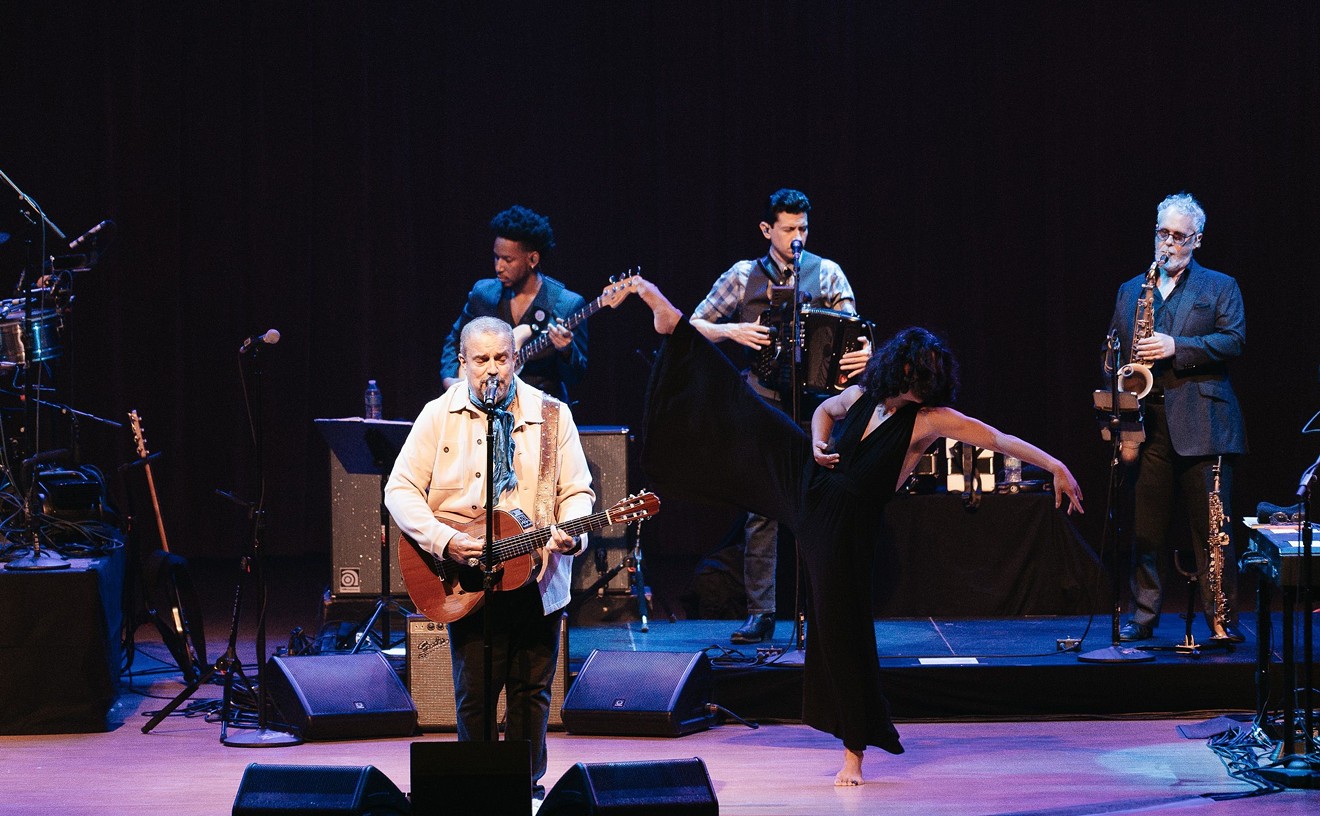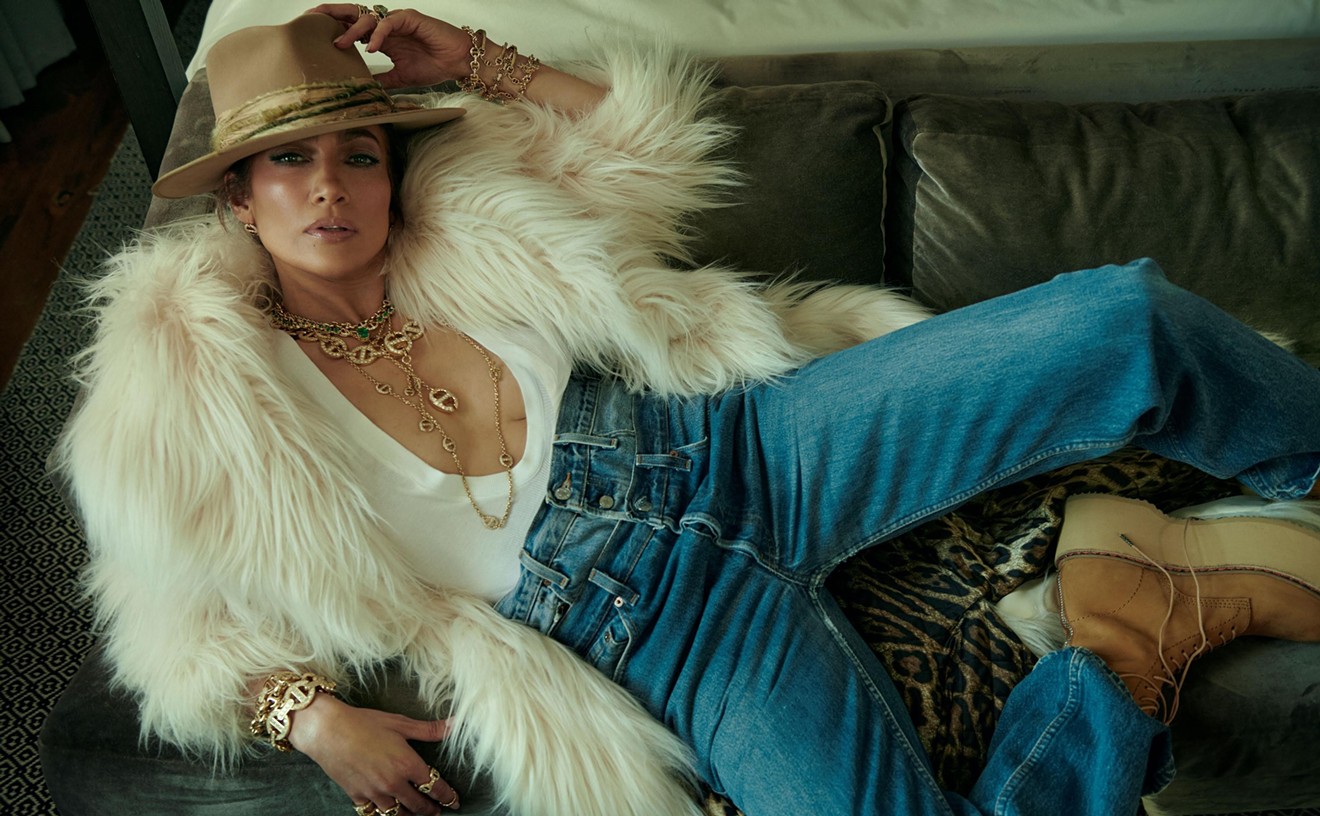Skrrrrrreeeeek. Shhwaaa-kraaang. Whump. Whump. Whump.
But not tonight.
100% Artcore is the schizophrenic, three-headed brainchild of Matt Fortunato, Brendan Grubb, and Sean Ryan, three local musicians who have played in experimental noise bands (including Junque, which has been described as "Radiohead on crystal meth"). If all goes well tonight, 100% Artcore might become a monthly deal. The swanky Karma Lounge, the interior of which is decorated in various shades of white, with funky metal barstools and black and red minimalist chairs, may seem like an odd choice for their type of avant-robotic-electro-noise. But that's a good thing, you see.
"Music-wise, we're going for electronic," Fortunato says. "It's hard to explain. We're trying to tie art back into electronic music, and the night is a bastardly stab at the future of electronic music, in a kinetic format."
A young, mixed crowd has gathered for the inaugural night. Visual artist Miss Agatha, who organized last year's Heatstroke exhibit with partner Cheri Marie, is playing the Eraserhead-meets-Japanese robot porn sci-fi flick Tetsuo on one wall, while guys in trucker hats and girls in thigh-high black boots lean against large white pillars, which are plastered with her ink drawings of a creepy half-woman, half-puppet.
DJs Funk Uranium and Mr. Bell are spinning noise, electro-smash, darkwave, electro-pop, IDM, lounge, future-pop, and ambient. Around 1 a.m., the dance tunes morph into an ominous carnival theme, the lights dim, and a red spotlight falls on a petite girl in a white babydoll dress who is walking slowly out of the bathroom, her round eyes peeking from beneath long, brown hair. She stands in front of the small DJ booth, grabs a microphone, and unleashes an ungodly, glass-shattering scream before falling to the floor. A few seconds later, she pops up, her pretty eyes bleeding black streams of mascara. She grabs a bouquet of flowers and waves to the crowd like a speed-addled beauty queen. People are quiet. Then the sound of something like a robotic squirrel fart played at 300 bpm kicks in -- riiippp-ahh-foosh-foosh-foosh -- and everyone starts dancing again.
In the women's bathroom, a curvy brunet in a black halter top expounds upon the Artcore experience. "Dance music is kind of like punk rock was in the '70s and '80s," says 25-year-old Jamie Alvarez, who is smoking one of those really thin, long cigarettes like Joan Crawford. "Things are changing. Think of all the DJs from ten years ago who are out of touch with the younger generation. The younger generation of 20-somethings are taking an interest in dance culture as an escape from mainstream radio crap. It's exciting, ya know? And it's an excuse to shake your ass."
Dance music could have the same potential as punk rock did to pile-drive people out of their apathetic stupor. In the late '80s and early '90s, it used to mean losing your mind in a dark club and coming to eight hours later with a glow stick in your pants and a business card from a German pharmacist named Gunter. It was an underground, subterranean subcultcha. Now, dance fans are just as apt to listen to Motörhead as Paul Oakenfold. Hell, you could even do a mashup of Motörhead and Paul Oakenfold and people would dig it.
"Dance music, by definition, has to be repetitive, which means it can be boring," Grubb says. "That's why there are so many subgenres. I mean, I don't think there's some dance guru on a mountaintop saying 'House is out; electroclash is in,' but that's the way it seems. We tried to make this night have a climactic flow. We start off ambient, then build to electronic, dancey stuff, and by the end of the night, it's mostly noise. You could dance to it, but you might look like Ian Curtis." Indeed, a look at the evening's "program book" shows five music-themed acts, the fifth of which promises to "help you find your way to the door."
By 2 a.m., most people had found their way to the door. The take still hadn't been counted, but an impressive 50 to 100 people had shown up. One of them was Don, the MVP of the night. "I love this music!" he frantically screamed over the dizzying noise. "It's weird! It's like, if I listened to this music at night, alone, I'd constantly be looking out my window, waiting for some futuristic half-man, half-robot thing to rap on my window. Then, I would invite him inside and take him apart and use the parts to build smaller robots, and we would all dance, muthafuckas!"










